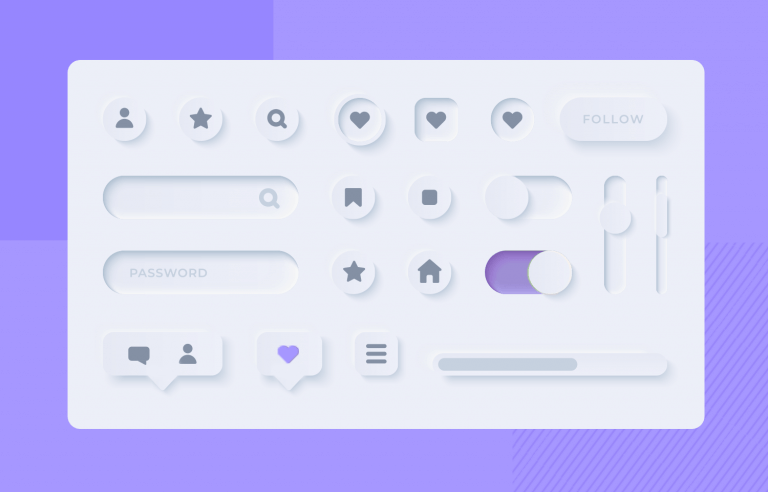The landscape of UI design has witnessed several paradigm shifts—from skeuomorphic interfaces that mimicked real-world elements to the crisp minimalism of flat and material design. In 2025, the spotlight now turns to a design language that’s creating buzz for its elegant, soft, and almost tactile interface aesthetics: Neomorphic Design.
What is Neomorphic Design?
Neomorphism (or "Soft UI") is a visual style that blends the principles of skeuomorphism and flat design. It uses subtle shadows, gradients, and highlights to give interface elements a slightly raised or pressed look—creating depth without being overly realistic or flashy. Think of it as digital embossing or debossing, where buttons and cards look like they are part of the same surface.
How It Differs from Flat and Material Design
While flat design focuses on clean lines and two-dimensional elements with solid colors, and Material Design emphasizes layering and animation, Neomorphism introduces depth using light and shadow but does so with minimal contrast and color variance. This gives interfaces a soft, modern, and futuristic appearance that feels native to high-end device displays.
"Neomorphic Design doesn’t just change the look—it changes how users emotionally perceive the interface. It’s subtle, immersive, and tactile, making digital experiences feel more organic."
- Lisa Renner, UI Lead at Nuform Labs
Core Characteristics of Neomorphic Design
- Soft Shadows: Elements appear extruded or inset using dual shadows (light and dark) positioned in opposite directions.
- Low Contrast: Colors are typically muted with minimal variation. Most often, light grays or pastel palettes are used to create a unified surface feel.
- Minimalistic Controls: Buttons, toggles, and input fields blend into the background while maintaining enough visual separation through depth.
- Consistency in Lighting: The entire UI follows a consistent light source, which is critical for maintaining realism.
Advantages of Neomorphic UI
1. Modern Aesthetics: Neomorphism gives interfaces a futuristic and premium look that sets applications apart in a crowded design market.
2. Enhanced User Delight: The tactile illusion creates a more engaging and emotionally resonant experience for users.
3. Focus on Micro-Interactions: Designers often use Neomorphic UI to enhance micro-interactions like toggles, switches, and hover effects, enriching user feedback.
Challenges and Considerations
Despite its visual appeal, Neomorphism is not without usability concerns. Low contrast can hinder accessibility, especially for users with visual impairments. Designers must ensure proper contrast ratios and include options for high-contrast themes. Additionally, overuse of soft shadows can lead to a “flat” appearance on poorly calibrated screens.
Use Cases: Where Neomorphism Shines
Neomorphic design is especially effective in minimal dashboard UIs, weather apps, smart home controls, finance applications, and modern portfolio websites. Brands looking to deliver a high-end, minimalist, and sleek product experience are adopting it enthusiastically.
Neomorphism in 2025 and Beyond
As UI trends evolve, Neomorphism is finding a balanced place—often blended with flat or material design elements for a hybrid approach. Designers now pair soft UI with vivid micro-animations and motion to maintain usability while preserving elegance.
In the next wave of UI innovation, Neomorphic Design stands as a strong reminder that subtlety, depth, and emotion in interface design can offer powerful user engagement—without overwhelming the senses.
Keywords
- Neomorphic Design
- Soft UI
- UI Trends 2025
- Design Aesthetics
- Minimalist UI
- UX Innovation
- Flat Design Evolution
- Material vs Neomorphic
- Interface Shadows
- Digital Tactility



